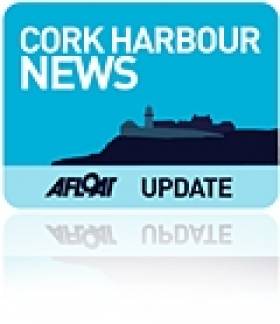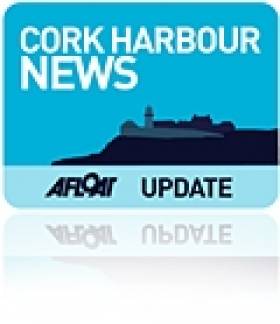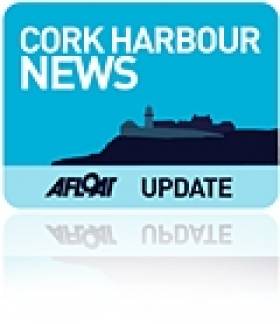Displaying items by tag: toxic waste
#CorkHarbour - The Irish Examiner reports on An Bord Pleanála's approval of a €40 million scheme to turn the toxic waste dump on Haulbowline Island into a public park.
Plans for the Cork Harbour site, adjacent to the former Irish Steel/Ispat plant, are still subject to the granting of a waste licence from the Environmental Protection Agency (EPA) in the coming weeks.
But this week's planning approval "was a big set necessary to convince people that this clean-up will happen," said Marine Minister Simon Coveney.
Conditions attached to the planning board's decision include the declaration of a 1km monitoring zone around the site with marine mammal observer to ensure that wildlife are not disturbed by the works to make safe some 500,000 tonnes of waste, including many toxic heavy metals and cancer-causing materials. The Irish Examiner has more HERE.
Last month the Green Party's Dan Boyle criticised the Government's slow progress on dealing with the Haulbowline site after the latest in a series of risk assessments was commissioned more than 18 months after the clean-up package was signed off.
In February this year local councillors raised concerns over leaks from the toxic waste site during that month's severe weather and high tides.
Haulbowline Toxic Site Could Be Cleaned Up By Late 2015
#CORK HARBOUR NEWS - The head of the team working on the clean-up of the toxic dump on Haulbowline Island says the site could be made safe by the end of 2015, as the Irish Examiner reports.
More than a year ago the Government signed off on a €40 million package to begin the clean-up of the toxic waste site at the former Irish Steel/Ispat plant in Cork Harbour, which closed more than a decade ago.
The site contains an estimated 500,000 tonnes of waste, including toxic heavy metals and various cancer causing materials such as Chromium 6.
Minister for the Marine Simon Coveney tasked Cork County Council with responsibility for managing the clean-up operation, which is scheduled to finally begin by mid-2014, according to project manager Dr Cormac Ó Súilleabháin.
In the meantime, the council must lodge an application for a waste permit licence with the Environmental Protection Agency (EPA).
Dr Ó Súilleabháin added that an analysis of the results from a risk assessment of the site in June last year had led to the conclusion that the majority of the waste should be left on the site, sealed off and topped.
The Irish Examiner has more on the story HERE.
#NEWS UPDATE - The Irish Petroleum Industry Association (IPIA) has proposed a suite of measures aimed at tackling the problem of illegal diesel washing in Ireland.
In a statement, the industry body for Ireland's fuel industry says that the practice is costing the Exchequer as much as €155 million annually in lost fuel duty.
"While other jurisdictions have to tackle this sort of fraud, the sheer scale of criminal washing of diesel is a particularly Irish disease," it said.
The IPIA's recommendations include the introduction of "a strong regulatory regime" to control the sale of rebated fuel, a new market for off-road diesel that is harder to disguise or remove, the closure of unlicenced filling stations, and a "radical overhaul" of the currently "absurd" penalties for offending retailers.
The Irish Angling Development Alliance (IADA) has fully backed the IPIA's proposals, citing the dangers of toxic waste byproducts from diesel washing operations.
"This toxic waste has been dumped illegally across the country, where it can enter the water table, not only seriously polluting water courses but also clean drinking water supplies."
Haulbowline Toxic Waste Site Will Be Cleaned Up by 2014 Says Govt
#CORK HARBOUR - The Government has finally set a deadline for the clean-up of the toxic waste site on Haulbowline Island in Cork Harbour, under threat of massive fines from the European Commission.
RTÉ News reports that a two-and-a-half year deadline has been set to complete the sanitation of the illegal dump on the island at the site of the former Irish Steel/Ispat plant.
Some 500,000 tonnes of waste, including toxic heavy metals and cancer-causing materials, have been blamed for the area's notoriety in having one of the highest cancer rates in Ireland.
As previously reported on Afloat.ie, in October last the Government signed off on a €40m package to begin clean-up of the toxic waste site on the island.
In an editorial yesterday, the Irish Examiner welcomed the Government's decision, but emphasised it was long overdue.
"[It] cannot dispel the great frustration that it has taken so very long to do what should have been done years ago," the paper said.
"To this day nobody has explained how an illegal dump of this scale was allowed to develop on a site that is not exactly secluded, remote or out of the public eye - it is, after all, just next door to the country’s main naval base."
The Irish Examiner also reports on worries that the toxic waste may never be fully removed from the island, but rather sealed off and made impermeable.
Minister for the Marine Simon Coveney was quoted as saying: "This whole clean-up plan will be peer reviewed so it’s best practice but it could be better to contain the material onsite rather than remove it.
"We will be doing all that is reasonable to ensure the site is safe."
Govt Signs Off On €40m to Clean Up Haulbowline Waste Site
The Government has signed off on a €40 million package to begin clean-up of the toxic waste site on Haulbowline Island in Cork Harbour, the Cork Independent reports.
As previously reported on Afloat.ie, the site at the former Irish Steel/Ispat plant - which closed a decade ago - contains an estimated 500,000 tonnes of waste, including toxic heavy metals and cancer causing materials, and has been blamed for the area's notoriety in having one of the highest cancer rates in Ireland.
The move comes after an ultimatum from the European Commission earlier this year to act on cleanup of the island.
Mary O'Leary, chair of the Cork Harbour Alliance for a Safe Environment (CHASE) lobby group, is cautiously optimistic about the Caninet's move on the issue, but said "the proof of the pudding is in the eating".
She told the Cork Independent: “Obviously we welcome the announcement, we have been fighting for 15 years for this. It is a guarded optimism because we were promised something in 2008. We didn’t see anything then so we will see what happens here."
O'Leary has been invited to join the steering committee that will oversee the cleanup.
“It is in all our interests that a solution is found for the former Ispat site," said Minister for the Marine Simon Coveney, "and I am determined to ensure that there are no further delays in finding a solution."
The Cork Independent has more on the story HERE.
Questions for Minister over Haulbowline Dump
Minister for the Environment Phil Hogan is set to be quizzed over plans to deal with the toxic waste site on Haulbowline island in Cork Harbour, the Irish Examiner reports.
As previously reported on Afloat.ie, two weeks ago the European Commission gave the Government three months to take action over the the former steel works, which contains an estimated 500,000 tonnes of toxic metal waste and cancer-causing materials.
The minister will meet Cork County Council on 9 May after an official request to discuss the matter was made by Cobh independent councillor Seán O'Connor.
Labour councillor John Mulvihill said locals would not be happy until the waste was removed and a study conducted to examine if there was any link between the site and high cancer rates in the area.
The Irish Examiner has more on the story HERE. See also our story Hot site in the harbour.
'Three Months to Clean Up Haulbowline' Says Europe
The Government has three months to start cleaning the toxic waste site in Haulbowline or risk court action by the European Commission, the Irish Examiner reports.
The site at the former Irish Steel plant contains an estimated 500,000 tonnes of waste, including toxic heavy metals and cancer causing materials, and has been blamed for the area's notoriety in having one of the highest cancer rates in Ireland.
Two petitions from local groups totalling 5,500 signatures were presented to the European Parliament's petitions committee in Brussels on Wednesday, according to The Irish Times.
Mary O'Leary, chair of the Cork Harbour Alliance for a Safe Environment (Chase), outlined to the committe that in spite of four reports between 1998 and 2005 highlighting the dangers of contamination from the site, the Irish State has failed to regulate it or take clean-up action.
Petitions committee member Jean-Francoise Brakland said he "fully agreed" with locals' concerns over the "dangerous mess".
He also commended Environment Minister Phil Hogan for understanding "the difficulties and the challenges of environmental implementation" but cautioned that "we are not going to wait for the next 10 years".
Brakland promised that if no real action was taken on Haulbowline after three months, the commitee would seek a court judgement againt the State.
The Irish Examiner has more on the story HERE.


































































